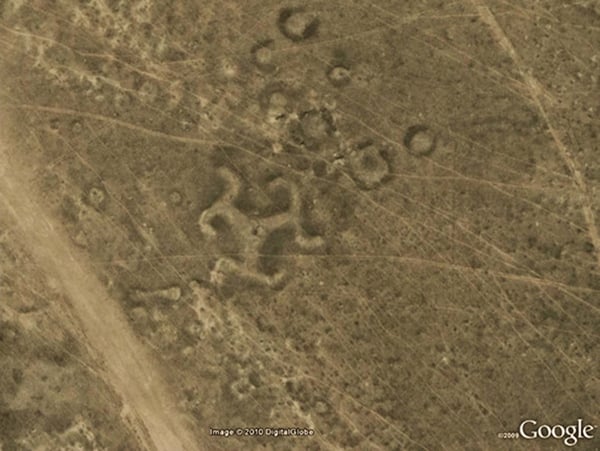Art World
Ancient Land Art Discovered Using Google Earth


Alexander Forbes

Members of a Kazakh research team came across the unexpected and momentous when trawling Google Earth. According to Live Science, the team has found more than 50 geoglyphs created in Northern Kazakhstan by ancient peoples of Central Asia.
Geoglyphs are earth drawings created with mounds of earth and other materials. Some in Kazakhstan have patterns created with timber.
The Kazakh discovery includes a large swastika, a symbol associated with eternity (prior to its co-optation by the Third Reich). There are also various rings, lines, and other forms of crosses. The land art–like relics range in size from 90–400 meters (295–1,312 feet).
Researchers did know of the existence of such formations in the region, according to a statement sent to Hyperallergic. However, the Kostanay University research team that made the discovery says this particularly large group was “found quite by accident…You open Google Earth and spend hours looking through the territory, and if you’re lucky, you find something.”
The recent discovery represents one of the most significant collections of geoglyphs outside of Peru. The country’s Nazca desert region is particularly well known for its Nazca Lines geoglyphs.
What remains a mystery is just how old the formations are and what purpose they served. “As of today, we can say only one thing—the geoglyphs were built by ancient people,” members of the research team told Live Science in an email.
The team will continue to perform archaeological excavations at the site to try to determine their approximate date. They are also using radar to search for subterranean clues regarding the geoglyphs’ purpose.